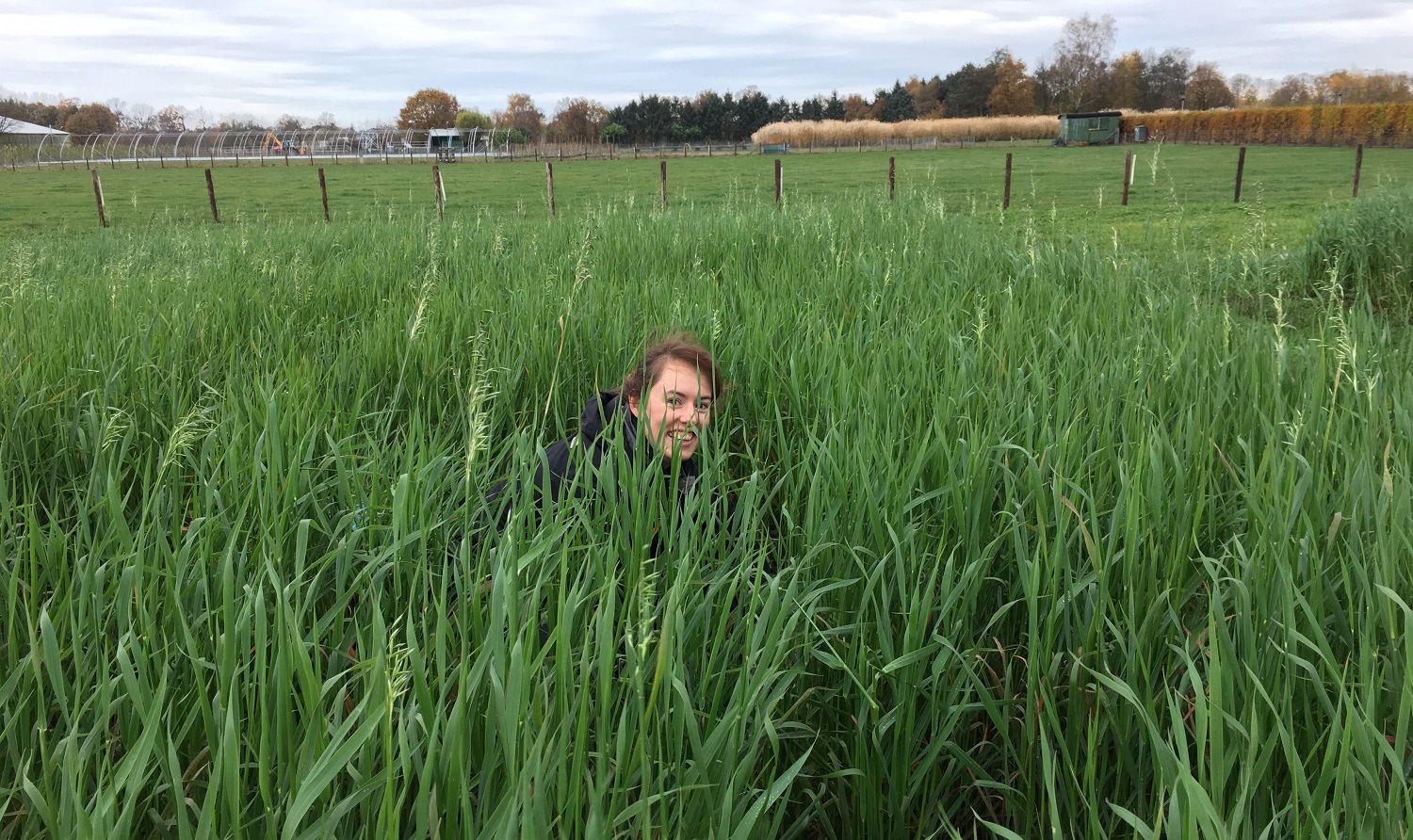Green manure, ground cover or so-called ‘catch crops’ are crops that farmers plant between the main crop harvests to improve the soil. These interim crops absorb nitrogen so that it doesn’t leach away during a downpour, enrich the soil with nutrients and organic matter when worked into the soil, or provide protection against parasitic nematodes.
Vetch
But should you use a single green manure crop or is a mix better? Previous Wageningen research showed that plants grow better if you grow different species next to one another. The whole is more than the sum of the parts. But does that also apply for green manure? Rima Porre decided to put that to the test with combinations of Japanese oats, vetch and Chinese radish.

The chosen species differ hugely in characteristics. According to Porre, farmers often use Chinese radish and oats because they grow fast. That rapid growth means they take up relatively large amounts of nitrogen, thereby preventing leaching of nitrate into the soil. Vetch fixes nitrogen from the air but does not grow so fast. The risk of nitrogen leaching is therefore greater.
Leaching
But mixes that include vetch are effective in preventing nitrate leaching, says Porre, who recently obtained a doctorate for this research. ‘The nitrogen losses during growth were just as low for mixes with vetch as for radish alone or oats alone.’ However, contrary to expectations, the mixes did not lead to more green manure growth.
The mixes with vetch and radis in particular show a significant effect
Rima Porre, Wageningen Environmental Rsearch
The mixes did perform well in terms of carbon sequestration in the soil. Porre: ‘The mixes with vetch and radish in particular show a significant effect, even if it is small. And that is just the result from a couple of years working with these crops. These things take time. Plus there seems to be an increase in the growth of the main crop too.’
Carbon sequestration
So smart use of ground cover makes sense, concludes Porre. ‘If you select species that differ in their characteristics so they complement one another, that reduces nitrate leaching and increases carbon sequestration. Based on those two functions, I’d say: go for it. But I didn’t look at the effect on soil biology, for example.’ Some of Porre’s colleagues are currently studying that.

 Rima Porre at the fields behind WUR. Foto: Rima Porre
Rima Porre at the fields behind WUR. Foto: Rima Porre